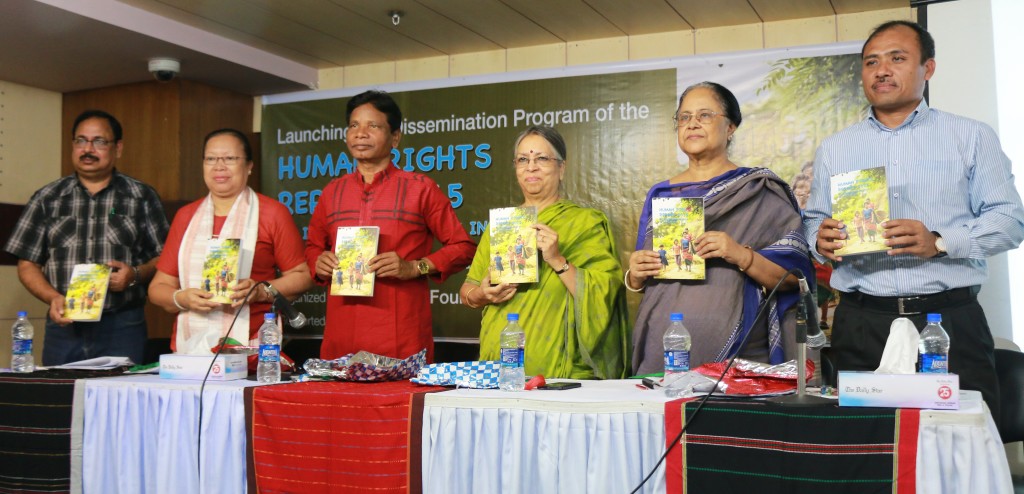
KF Report: On 23 March 2016, Kapaeeng Foundation (KF) with support from Oxfam launched the “Human Rights Report 2015 on Indigenous Peoples in Bangladesh” at Tawfiq Aziz Khan Seminar Hall, The Daily Star, Dhaka.
Noted human rights activist and Former Adviser to the Caretaker Government of Bangladesh Advocate Sultana Kamal present as Chief Guest in the launching ceremony of the Report.
Ms Ayesha Khanam, President, Bangladesh Mahila Parishad; Ms Nirupa Dewan, Member, National Human Rights Commission; Advocate Rana Dasgupta, General Secretary, Bangladesh Hindu-Buddhist-Christian Unity Council; Mr MB Akhter, Program Director, Oxfam and Mr Sanjeeb Drong, General Secretary, Bangladesh Indigenous Peoples Forum were present in the event as distinguished guests. The event was chaired by Mr. Rabindranath Soren, Chairperson of Kapaeeng Foundation. Mr. Pallab Chakma, Executive Director of KF made a presentation on the Report while the welcome speech was delivered by Chaitali Tripura, Vice-Chairperson of KF. Flaguni Tripura, Advocacy Facilitator of KF, moderated the ceremony.
Advocate Sultana Kamal said, we took part in the Liberation War with the dream to see a democratic and humane State where everyone in the country would be equal in dignity. If we compare the current situation of indigenous peoples with what we dreamt for, it is a clear that our dream is being violated. The State has pushed indigenous population onto the verge of extinction – hence, the State has to listen positively to what has been revealed in the Human Rights Report and take steps to defend the rights of general people including indigenous peoples.
Ms Ayesha Khanam said, the long-waged movement of indigenous peoples, the pain of denial of rights, repeated occurrence of human rights violations and illusive justice have entrenched a kind of exclusion in the minds of indigenous peoples. In order for protecting the rights of indigenous peoples, the State has to change its political view towards them.
NHRC Member Ms Nirupa Dewan said, despite the constant violations of the rights of indigenous peoples, indigenous peoples are still hopeful and they still have the belief that every citizen of country is equal in the eyes of the Constitution and the State. Since it is the current government that signed the CHT Accord, we have the highest expectation from this government.
Mr. MB Akhter said, the State has to be more caring and active in protecting the human rights and it has to listen to the minority-indigenous people. This country is not only for the Bangalees, but this country is for minorities, indigenous peoples and all the citizens of the country.
Around a hundred rights activists, civil society members, academics, journalists, indigenous leaders and youths were present in solidarity with the launching ceremony of the “Human Rights Report 2015 on Indigenous Peoples in Bangladesh.”
EXECUTIVE SUMMARY of the Human Rights Report 2015 on Indigenous Peoples in Bangladesh
There is practically no significant change in legal and policy areas affecting the indigenous peoples in Bangladesh during the year under review. The Government passed a number of laws, regulations and policies in 2015 e.g. adoption of Bangladesh Public-Private Partnership Act 2015 and Labour Regulation 2015 in the Parliament and the Cabinet approval to Domestic Worker Protection and Welfare Policy. However, these legal and policy documents referred to, embody nothing specific about issues of indigenous peoples.
Started in 2012, the Government continued with the process of amending the Forest Act in 2015 as well. The draft Forest Act 2015 includes a number of provisions detrimental to the rights of indigenous peoples and forest dwellers. On the other hand, the amendment process to the CHT Land Dispute Resolution Commission Act 2001 in pursuance of the CHT Accord that, in fact, began in 2001 still remained to be amended even in 2015. A 13-point amendment proposal was adopted for the 2nd time to amend the CHT Land Commission Act in January 2015. However, the amendment bill of this act is yet to be put up before the cabinet for approval before placing it in the Parliament for passage.
The Ministry of Primary and Mass Education again failed to accomplish publication of textbooks for indigenous children of primary schools in five of their selected mother tongues, an initiative started in 2013. However, the most optimistic feature in one of its policy documents, 7th Five Year Plan (FY2016-2020) which has already been drafted, is the retention of government’s willingness, as was the case with the 6th Five Year Plan, to consider implementation of the UNDRIP and ratification of the ILO Convention No. 169.
Situation of Civil and Political Rights
Civil and political rights of indigenous peoples are often intimidated in many cases. Right activists engaged in their legitimate actions to protect and promote their rights to self-government, land and resources, are frequently criminalized resulting in their arrests, detention, enforced disappearances and even sometimes become victims to political killings. In 2015, at least 74 members of indigenous communities including women and schoolgirls were arrested. They were charged with criminal offences. However, most of them were released later on bail. On the other hand, fabricated cases were framed against at least 117 indigenous souls. Besides, 13 indigenous people (including three indigenous women and girls) were extra-judicially killed in both the CHT and the plains. The recurrence of arbitrary arrests, detentions and extrajudicial killings on indigenous peoples intensified alarmingly during the year under review. Fabricated charges were brought against as many as 191 persons, 74 of whom were arrested as against only 5 persons who were indicted in 2014.
At the same time, at least 134 indigenous people, 101 from the CHT and 33 from the plains, were tortured and physically assaulted. While bulk of the physical assaults were carried out by influential Bengali non-state actors, in many instances, the state actors such as members of security forces and law enforcement agencies played either supportive or passive roles in the commitment of such crimes.
Houses and properties were destroyed and looted by the miscreants of the non-indigenous origin. In 2015, at least 84 houses belonging to indigenous peoples in the plains were vandalized and looted and 35 houses in the plains and the CHT were set on fire and burnt to ashes by the land grabbers.
Land, Natural Resources and Climate Changes
As were in the previous years land related human rights violations against indigenous peoples continued in 2015. A total 26 houses of indigenous peoples in the plain land were burnt to ashes, while 65 houses were reported to have been looted and ransacked by land grabbers. 44 indigenous people, 5 from the CHT and 39 from the plain land were physically assaulted and wounded by land grabbers in land related hostilities.
In 2015, at least 45 indigenous families were ousted from their ancestral lands, while 1400 indigenous families including 657 from the CHT were threatened with eviction from their lands. Land related hostilities resulted in an assault on, at least, an indigenous village by land grabbers in the plain land, while a total 5,216 acres of land including 11.50 acres in the plains were grabbed by both the state and non-state actors. Such a big mass of lands, essentially, comprising Jum and mouza land in the CHT were occupied by outsider lease holders which threatened the livelihoods of hundreds of Jum cultivators particularly in Bandarban district. Also, approximately 1326.99 acres of land including 22.5 acres in the CHT were targeted for illegal encroachment or acquisition. Bringing false charges against indigenous peoples by the land grabbers is a common key tactics to preempt the resistance by the indigenous peoples in defending their lands in the country. Land grabbers in 2015, filed false cases against, at least, 28 indigenous people including 11 from the plains to break down whatever resistance the indigenous people could offer.
The activation of the Land Boundary Agreement between Bangladesh and India signed in 1974, following its passage in the Indian Parliament in 2015, caused a new problem for the indigenous peoples in the plains as a total of 360 acres of land, on which the livelihood of around 350 indigenous Garo and Khasi people of Pallathol under Barlekha upazila in Moulvibazar were dependent, was to be transferred to India.
The indigenous people in the CHT are generally displaced from their ancestral lands due to land confiscation in the name of plantation by so-called lease-holders & private companies, establishment of camps and tourist spots, reserved forest and land grabbing by Bengali settlers, while influential Bengalis, tea estate holders, leaders of national political parties and government authorities are responsible in evicting the indigenous people in the plains. In both the cases, the act of eviction is aided by disregarding the customary land management system of indigenous peoples, national laws and policies, including the CHT Accord in the CHT region and the East Bengal State Acquisition and Tenancy Act 1950 in the plains. Aggravating the situation, local police and officials in the land office often play supportive roles in aid of land grabbers in the plains, while the local administration and security forces, in the main, back Bengali settlers and private companies in grabbing lands in the CHT. In fact, the biggest worrying factor in both the CHT and the plains is the ‘element of impunity’ which helps perpetrators of human rights violations against indigenous peoples to evade punishment, in spite of the fact that Bangladesh government is committed to comply with the international human rights norms as well as national laws and regulations in order to promote the rights of indigenous peoples in the country.
Situation on the Rights of Indigenous Women and Girls
As reported, 85 indigenous women and girls fell victim to sexual and physical violence in 2015 in Bangladesh. Among them, 44 victims were from the CHT, while 41 were from the plain land. Since 2007, a total of 434 indigenous women and girls were made victims of multiple forms of human rights violation. In 2015, at least 26 cases of rape/gang rape, 3 killing, 11 physically assault, while 16 cases of attempted rape, 5 cases of abduction, 6 cases of sexual harassment, and 2 cases of trafficking were documented. A total of 69 cases of violence against indigenous women and girls in Bangladesh were documented in 2015. Of the 69 cases, 38 cases were reported from and documented in the CHT, while the remaining 31 cases were from the plains.
The victims were found to be in the age group between 4 to 50 years. As far as the filing of cases (with the police) with regard to 69 incidents of violation was concerned, cases were filed on 46 incidents. Rests of the incidents were either resolved through arbitration or were not informed to the police for action. From the analysis of the available data, it appeared that 78% of the perpetrators were non-indigenous, while 15% of them were indigenous. 6% of the violators could not be identified, while the law enforcement and security personnel accounts for 1%.
Like in the previous years, most of the cases relating to human rights violation involving the indigenous peoples in Bangladesh were centered on land. The land grabbers used the heinous ploy to sexually and physically violate indigenous women and girls in order to terrorize the community to unsettle them, and thus create opportunities for them to occupy the lands belonged to indigenous peoples. For example, on 19 June 2015, land-greedy ruffians invaded a victim’s land in Mirsarai under Chittagong, where 10 women and children were injured. On 24 July 2015, some Bengali settlers stabbed and wounded a Marma woman with the motive to oust her from her land. The alarming figures of violence committed against indigenous women and girls across the country in the recent past included not a single case of instance to prove that the victim availed justice. Rather in most cases, the perpetrator got out of bail and skipped punishment due to corruption in the justice system which often tended to be bias towards the perpetrators.
From the information available in 2015, it could be seen that cases were filed against most acts of violence, but no proper action was taken against even a single case. Malpractice in the prosecution and justice system often deprived the victims from getting redress. Failure to close the gap between acts of crime and dispensation of justice, on the other hand, encouraged perpetrators to threaten victims’ family. The abductors of Kalpana Chakma, who was abducted in June 1996, could not be produced before the court to face trial till today. The investigation officer failed to submit his investigation report to the court for the 22nd times since her abduction. In the case of attack on women leader Bichitra Tirki by land grabbers in August 2014 in Chapainawabganj District, the perpetrators succeeded in obtaining bail by bribing the investigating officer and other concerned officials. The trial process of Sujata Chakma’s murder case moves at a snail’s pace. For example, deposition of five witnesses took place in 2013-2014, but no statements from other witnesses were recorded in 2015.
Situation on the Rights of Youth, Child and Education
While the overall situation of indigenous peoples in Bangladesh is in a dreadful state, the condition of the child and the youth, and the status of their rights to education in the country can hardly be deemed satisfactory. The issues concerning the rights of indigenous children seldom get space to be discussed about. There is the lack of segregated data and information on the issues of indigenous children. It is, therefore, problematic to analyze the human rights situation of indigenous children in the country. However, a general observation of their situation gives a clear indication that indigenous children in Bangladesh are doubly discriminated — firstly, because they are indigenous and secondly, because they are children. Their human rights enshrined in the Convention on the Rights of the Child (CRC), to which Bangladesh is a signatory, are routinely violated. The Child Rights Committee’s review of Bangladesh held in September 2015 reflects the storyline of the situation. Bangladesh enacted the Children Act, 2013 in line with the CRC with a view to respect, protect and promote the rights of children in Bangladesh. However, the law remains largely on paper and the provisions of the Act are yet to come into force. Moreover, the Act remains silent about the issues specific to indigenous children. The whole document does not mention the word ‘indigenous’. Given this backdrop, the condition of indigenous children, on the whole, in 2015 remained more or less similar to that of the previous years.
Educational rights are intertwined with the rights of the children and youth, although education has other dimensions, too, as it covers people of all the age groups. Educational rights of indigenous peoples got some focus from the policy makers in the recent years. The initiatives undertaken by the government include a plan to introduce mother tongue based education, setting up of parakendras (village-centers) and bringing the illiteracy rate down. The initiatives undertaken are, nonetheless, deemed to have fallen short of protecting and promoting educational rights of indigenous peoples including that of their children. In 2015, the situation of educational rights held out similar trends as in the past years in spite of having some mixed developments. Although a number of positive developments have been observed throughout the year, however, some initiatives actuated by the government have violated the educational rights of children, and suffered from serious limitations.
Present State of Implementation of the CHT Accord
The CHT Accord signed in 1997 has completed its 18 years without making any real progress towards commissioning of an effective and functioning local self-governance system that ensures land and other rights for the indigenous peoples in the CHT. The promised amendments to the contravening sections of the CHT Land Dispute Resolution Commission Act, 2001 are yet to be made.
It is to be mentioned that as per the decision taken in the meeting held at Prime Minister’s office on 18 February 2015 between the Prime Minister Sheikh Hasina and Chairman of CHT Regional Council who is also the President of PCJSS, the 18-page report titled: “Statement on the Unimplemented Issues of the CHT Accord” attached with 16 supporting documents as annexure was handed over to the Prime Minister on 1 April 2015. But no progress has been made in this regard to this day.
The development programs, being implemented in the CHT, are not respectful of the region’s distinct cultural identity, is not self-determined, and without any free, prior and informed consent of the indigenous peoples, as stipulated in CHT Accord, the United Nations Declaration on the Rights of Indigenous peoples (UNDRIP) and World Conference on Indigenous Peoples (WCIP) Outcome Document.
Published on 23 March 2016.



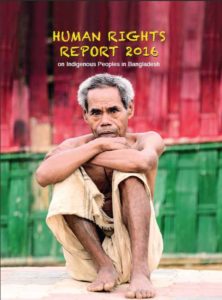
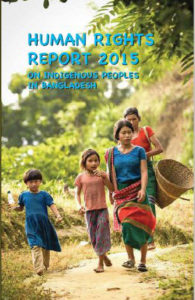
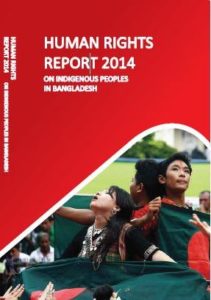
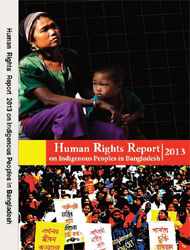
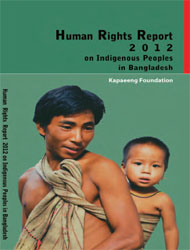
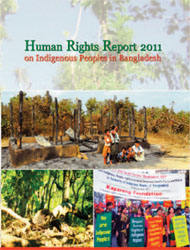
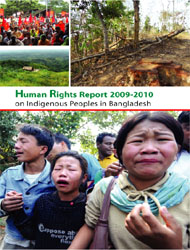

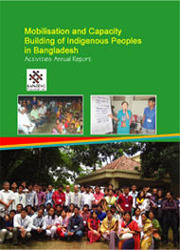



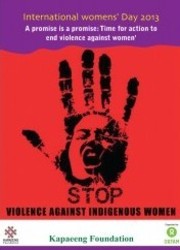
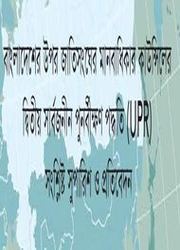
 March 23rd, 2016
March 23rd, 2016  KapaeengUser
KapaeengUser  Posted in
Posted in 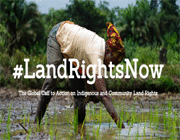
Dear Madam/Sir,
Is it possible to download a PDF copy of the full report for 2015? If yes, would you please provide a link.
Also, if possible I would like to have a few printed copies. You can reply with details on my email address.
Thank you very much.
Pls see the link to find the HR Report 2015-
http://kapaeeng.org/wp-content/uploads/2016/05/E-version-HR-Report-2015.pdf